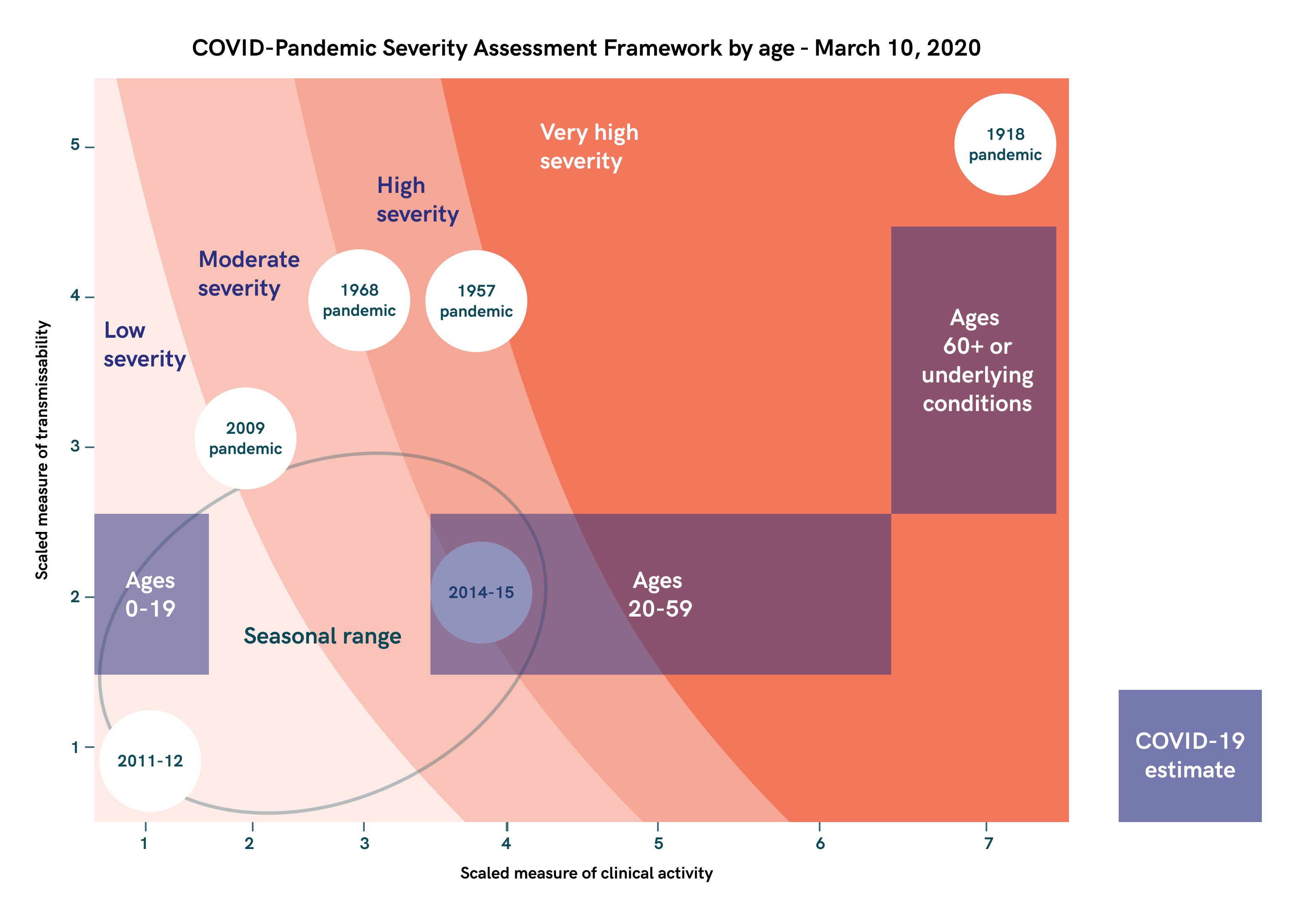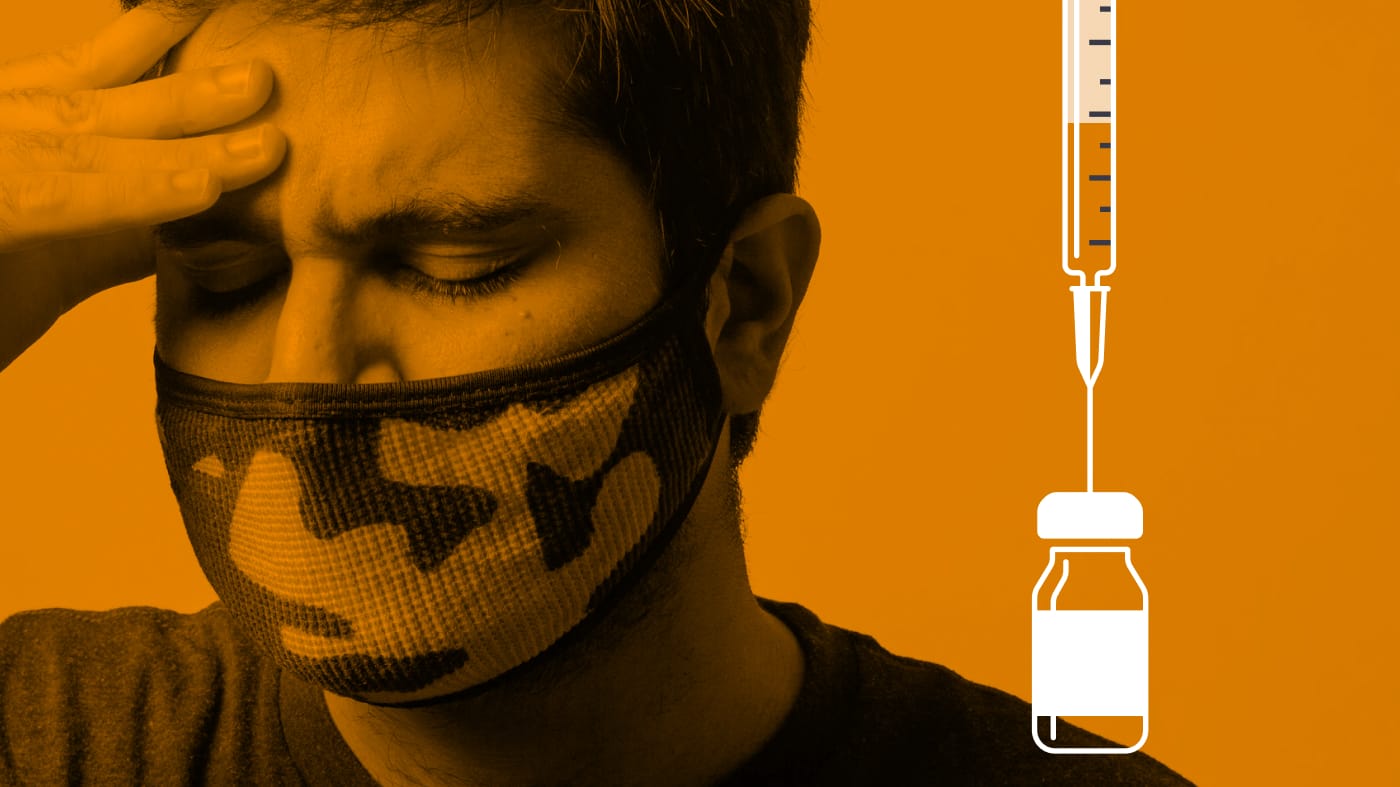
*Adapted from Reed, et al. Emerg Infect Dis. 2013;19:85-91. Data as of March 9, 2020
The figure above shows that both COVID-19 spread and severity appear to increase with age, with the most severe cases in people 60 or older and those with underlying health conditions. Children appear much less likely to become severely ill, and for them this pandemic may be mild. For healthy adults between ages 20 and 60, it cannot yet be predicted whether this will be a moderate or more severe pandemic. For the vulnerable group of people who are over 60, particularly those with chronic health conditions, COVID-19 is currently projected to be a severe pandemic.
A pandemic framework allows for initial and ongoing assessment of how infectious and severe a pandemic is, and can help identify appropriate response strategies, including whether communities should cancel large events. To estimate the overall severity of a pandemic, the framework considers how easily the virus spreads and how severe the symptoms are that patients experience. The figure above shows past pandemics and seasonal influenza, including:
- The 1918 Spanish flu pandemic (up to 675,000 deaths in the U.S. and up to 50 million deaths globally)
- 1957 H2N2 pandemic (116,000 deaths in the U.S. and 1.1 million deaths globally)
- 1968 H3N2 pandemic (100,000 deaths in the U.S. and 1 million deaths globally)
- 2009 H1N1 pandemic (12,500 deaths in the U.S. and up to 575,000 deaths globally).
- 2011-2012 seasonal influenza (12,000 deaths in the U.S.)
- 2014-2015 seasonal influenza (51,000 deaths in the U.S.)
Many of these pandemics occurred in a much different global context than today. The US population in 1918 was less than one third of the current population. Vaccines and medications can be developed more rapidly than half a century ago. Intensive care is more effective now. But, today diseases can have greater impact due to increased travel and urbanization, we have a larger older population and more people with chronic health conditions, and wide disparities between the most and least prepared countries in the world. Although there is now more timely access to information, there is also faster spread of misinformation.




